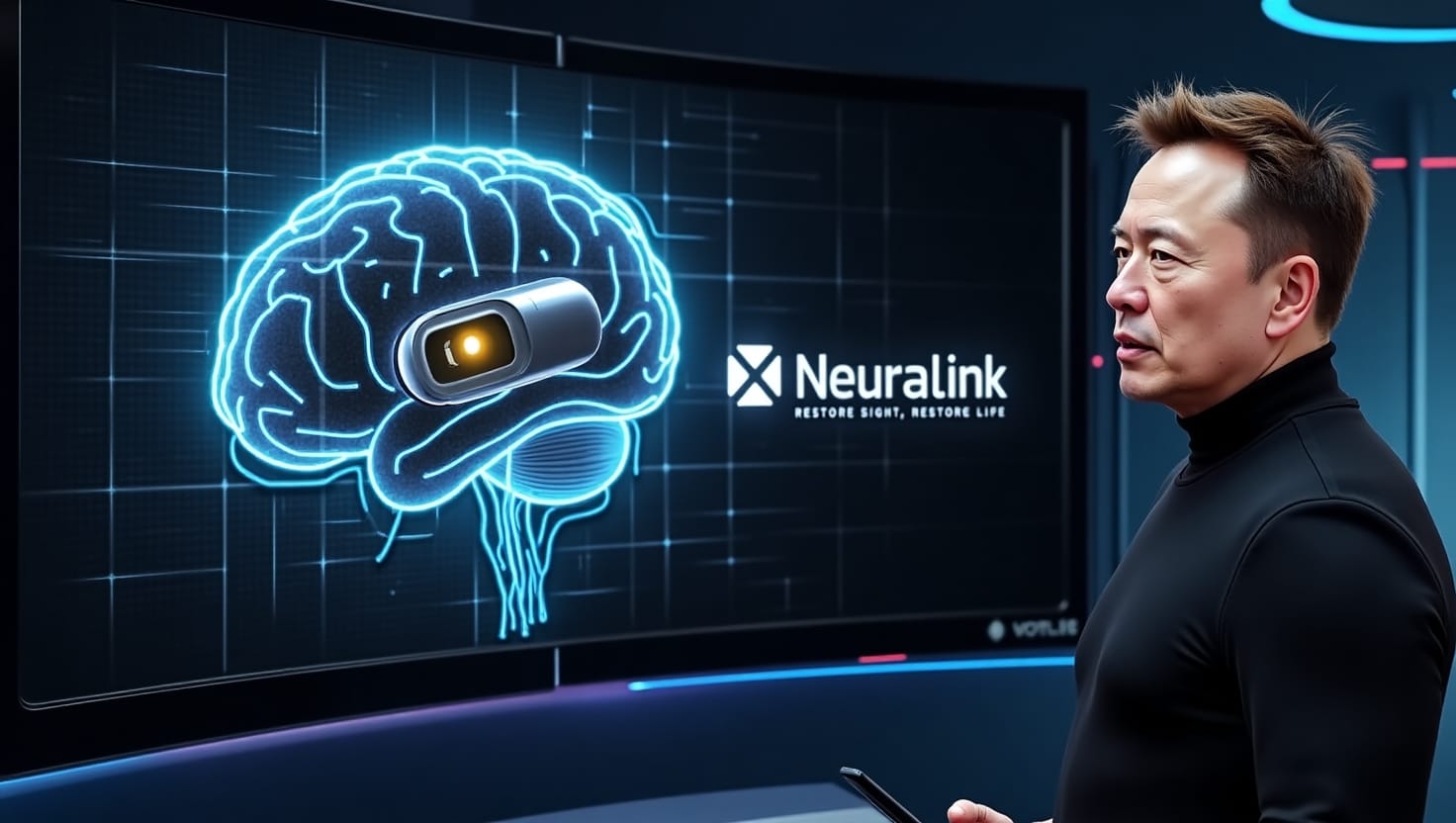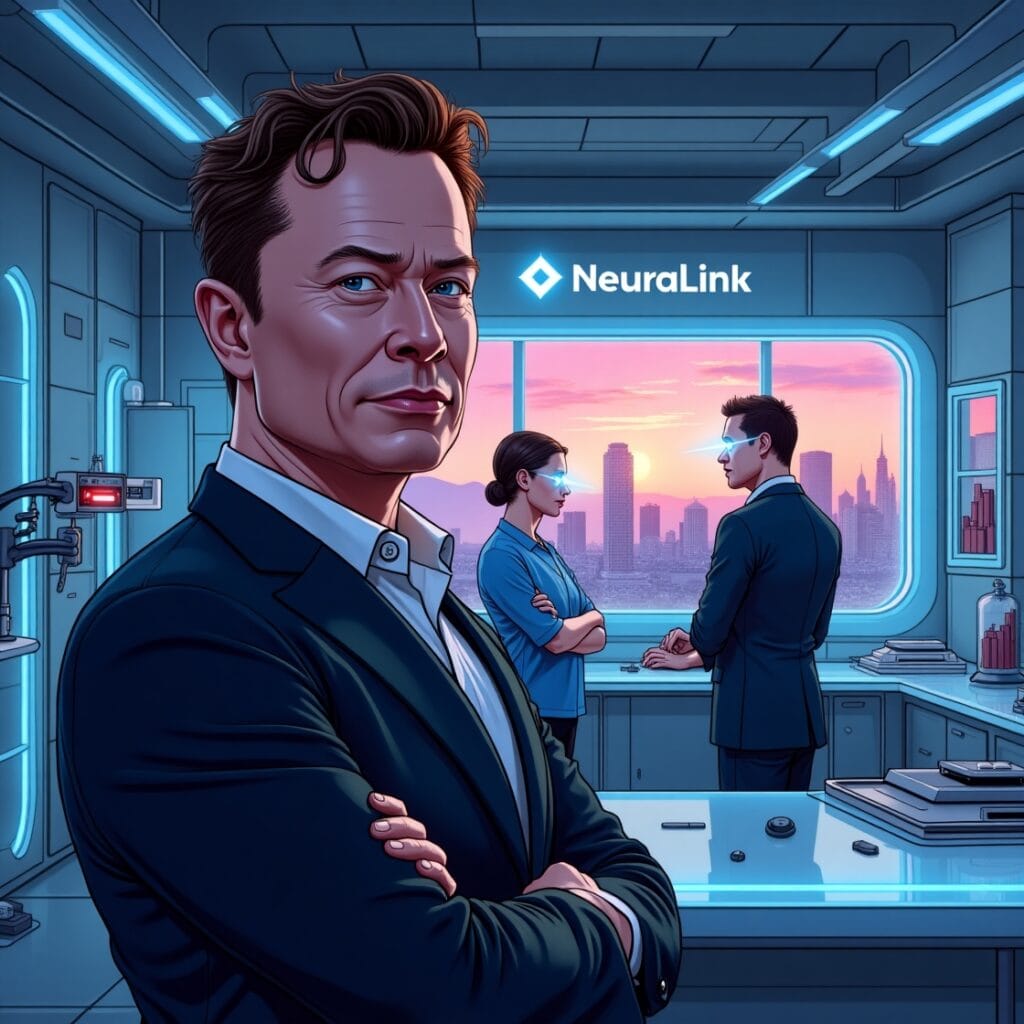
Introduction: A Breakthrough in Neurotechnology
Elon Musk’s Neuralink has been at the center of innovation for years, working on brain–computer interfaces that aim to merge humans with artificial intelligence. After showcasing progress in restoring mobility to paralyzed patients, Neuralink has now revealed Project Blindsight—an ambitious step toward restoring vision to the blind.
This project could become one of the most revolutionary milestones in medical science, offering hope to millions of people worldwide who live with vision loss. Musk’s vision isn’t just about treatment—it’s about restoring independence and quality of life.
What Is Project Blindsight?
Project Blindsight is Neuralink’s latest initiative designed to create a direct connection between the human brain and artificial vision systems. Instead of repairing the damaged eye, the device bypasses the traditional visual pathway and stimulates the brain’s visual cortex directly.
This means that even people who have been blind from birth or have severe retinal damage could potentially experience some form of sight again.
The 5 Bold Steps of Neuralink’s Mission
Step 1: Mapping the Visual Cortex
Before restoring vision, Neuralink’s scientists need to understand how the brain interprets visual signals. Using advanced AI models, they are mapping how neurons in the visual cortex respond to light, shapes, and movement.
- This involves recording brain activity in real-time.
- Creating a database of how the brain “sees.”
- Building AI models that can translate digital signals into neural activity.
This step is crucial because every brain processes vision differently, and the device must adapt to each user.
Step 2: Developing the Brain Implant
Neuralink’s signature device—a tiny chip with ultra-thin electrodes—is being customized for the visual cortex. This implant will receive digital signals from external cameras and convert them into neural impulses.
- Electrodes are thinner than human hair, making them safe for the brain.
- They can both read and stimulate neurons, creating a two-way communication channel.
- The device is wireless, sending data in real-time.
This is the core hardware of Project Blindsight.
Step 3: Creating Artificial Vision Through AI
Neuralink is working with machine learning models that act like an artificial retina. A small camera (possibly in glasses or wearable devices) captures the surroundings, and the AI translates the images into neural language that the brain can understand.
- Early prototypes show the ability to recognize outlines and movement.
- Over time, resolution may improve, leading to color and depth perception.
- AI personalization ensures each user’s brain learns and adapts at its own pace.
This fusion of AI + neuroscience is what makes Project Blindsight revolutionary.
Step 4: Human Trials & Safety Testing
After successful animal trials, Neuralink is preparing for human clinical trials. The company has already gained approval for brain implant testing in paralyzed patients, which paves the way for vision-focused experiments.
- Trials will start with patients who have complete blindness.
- Focus will be on safety, stability, and proof of concept.
- Gradual improvements in vision will be tracked.
If successful, this could lead to FDA approval for broader medical use.
Step 5: Scaling for Accessibility
Elon Musk often says that Neuralink’s technology should be accessible to everyone, not just the wealthy. The final step of Project Blindsight will be to make the implants affordable and widely available.
- Partnerships with hospitals and research centers.
- Mass manufacturing of brain–computer interface devices.
- Integration with AR glasses to enhance vision further.
This step ensures that millions of people around the world can benefit—not just a few.

Elon Musk, the visionary entrepreneur behind Tesla, SpaceX, and X (formerly Twitter), is once again pushing the boundaries of what technology can do for humanity. His brain-tech company Neuralink has announced a revolutionary new project — Blindsight — designed to restore vision in people who are blind, including those born without sight.
More than just another product, Project Blindsight represents Musk’s mission to merge humans with machines, giving people the power to overcome once-irreversible disabilities using brain-computer interfaces.
What is Project Blindsight?
Unveiled in 2025, Blindsight is Neuralink’s most ambitious neuroscience project to date. The goal? To enable blind individuals to “see” again — not by fixing their eyes, but by using a chip implanted in the brain that bypasses the eyes and optic nerves altogether.
Instead of relying on traditional vision pathways, the system transmits visual data directly to the brain’s visual cortex, allowing users to perceive the world through artificial signals — a concept once considered science fiction.
1. Developing Advanced Neural Implants
Neuralink is creating ultra-thin brain chip interfaces capable of translating visual data into neural signals, bypassing damaged optic nerves.
2. Integrating AI-Powered Image Processing
Using AI algorithms, visual information is enhanced and converted into simplified, high-contrast signals that the brain can interpret more effectively.
3. Partnering with Vision Science Experts
Collaboration with neuroscientists and ophthalmologists ensures the device works with diverse causes of blindness, from retinal damage to cortical vision loss.
4. Conducting Human Trials for Proof of Concept
Carefully monitored human testing phases aim to validate the safety, accuracy, and real-world usability of the implant before large-scale deployment.
5. Building a Scalable Vision-Restoration Platform
The long-term goal is to make the technology affordable and adaptable for millions worldwide, potentially restoring partial or full sight in eligible patients.
Elon Musk’s Vision: A Future Beyond Human Limits
Elon Musk has long expressed interest in enhancing human capabilities through neural implants, and Project Blindsight is a major milestone on that path. According to Musk:
“Even if someone has never had vision, ever — like they were born blind — we believe they can see using Neuralink.”

That’s not just a medical solution — it’s a philosophical leap. Musk isn’t just aiming to restore lost abilities; he’s building a future where technology gives us superhuman potential.
In the long run, he envisions:
- Infrared or night vision
- Ultraviolet light perception
- Enhanced digital overlays
- And even vision more powerful than anything biology can offer
How Does It Work?
The Neuralink brain chip, already tested on paralyzed patients, can record brain activity and send electrical signals to specific regions. In the case of Project Blindsight:
- A camera or visual input system collects imagery.
- The chip processes the data and sends it straight to the visual cortex.
- The user perceives images, shapes, and possibly even depth — without needing eyes or optic nerves.
Initially, vision may be low-resolution, similar to 1980s video game graphics, but the resolution is expected to improve dramatically as the technology evolves.
FDA Approval: A Game-Changer
In a major regulatory win, the U.S. Food and Drug Administration (FDA) has granted Project Blindsight a “Breakthrough Device” designation — a fast-track status for technologies that treat life-altering conditions.
This status:
- Accelerates clinical trials and development
- Validates Neuralink’s potential to change the lives of millions
- Recognizes Elon Musk’s project as a legitimate medical innovation, not just tech hype
When Will Human Trials Begin?
Human testing for vision restoration could begin as early as late 2025, Musk confirmed. Neuralink has already implanted its chip in a paralyzed patient, who can now control a computer with thoughts alone. Vision restoration is the next frontier.
If successful, it would mark the first-ever direct-to-brain vision system approved for human use — a historic moment in medical and technological progress.
More Than Just Sight: The Bigger Neuralink Agenda
Project Blindsight is only one part of Elon Musk’s larger Neuralink roadmap, which includes:
- Curing paralysis
- Treating memory loss
- Restoring speech in ALS patients
- And eventually, achieving brain-to-brain communication
The ultimate goal? A seamless connection between human intelligence and artificial intelligence, empowering individuals to augment their minds and transcend physical limitations.
Impact on the Blind Community
The World Health Organization estimates that over 40 million people worldwide are blind, with hundreds of millions more visually impaired. Project Blindsight could:
- Restore partial or full vision for patients with retinal damage, optic nerve injuries, or congenital blindness.
- Increase independence by helping individuals navigate daily life.
- Improve employment opportunities, education, and quality of life.
This isn’t just about technology—it’s about human dignity and empowerment.
Elon Musk’s Long-Term Vision
Musk has stated that Neuralink’s ultimate goal is to enhance human capability and merge humans with AI. While that might sound futuristic, Project Blindsight shows that his vision also has direct humanitarian impact.
If successful, Neuralink could move from restoring sight to the blind toward enhancing normal vision—such as zooming in, seeing in the dark, or even augmented reality overlays directly in the brain.
Pros & Cons of Neuralink’s Project Blindsight
Pros:
- Could restore vision where current medicine fails.
- Uses AI + neuroscience for revolutionary results.
- Strong backing from Elon Musk’s Neuralink team.
- Potentially scalable for global use.
Cons:
- Still experimental—long way before commercial use.
- Ethical and safety concerns with brain implants.
- Unknown long-term side effects.
- Expensive technology (at least in early stages).
Final Thoughts: A New Era of Human Possibility
With Project Blindsight, Elon Musk is not just restoring sight — he’s redefining what it means to see.
This is more than just a medical device. It’s a glimpse into a future where blindness may no longer be permanent, where humans can access new forms of vision, and where our brains are no longer confined by biology.
As Neuralink pushes forward, the world watches — because if Musk’s vision becomes reality, the blind may soon see again, and the rest of us may see further than ever before.
Follow USAtrends.tech for the latest updates on Neuralink, brain-tech, and Elon Musk’s ongoing mission to reshape the human experience.





